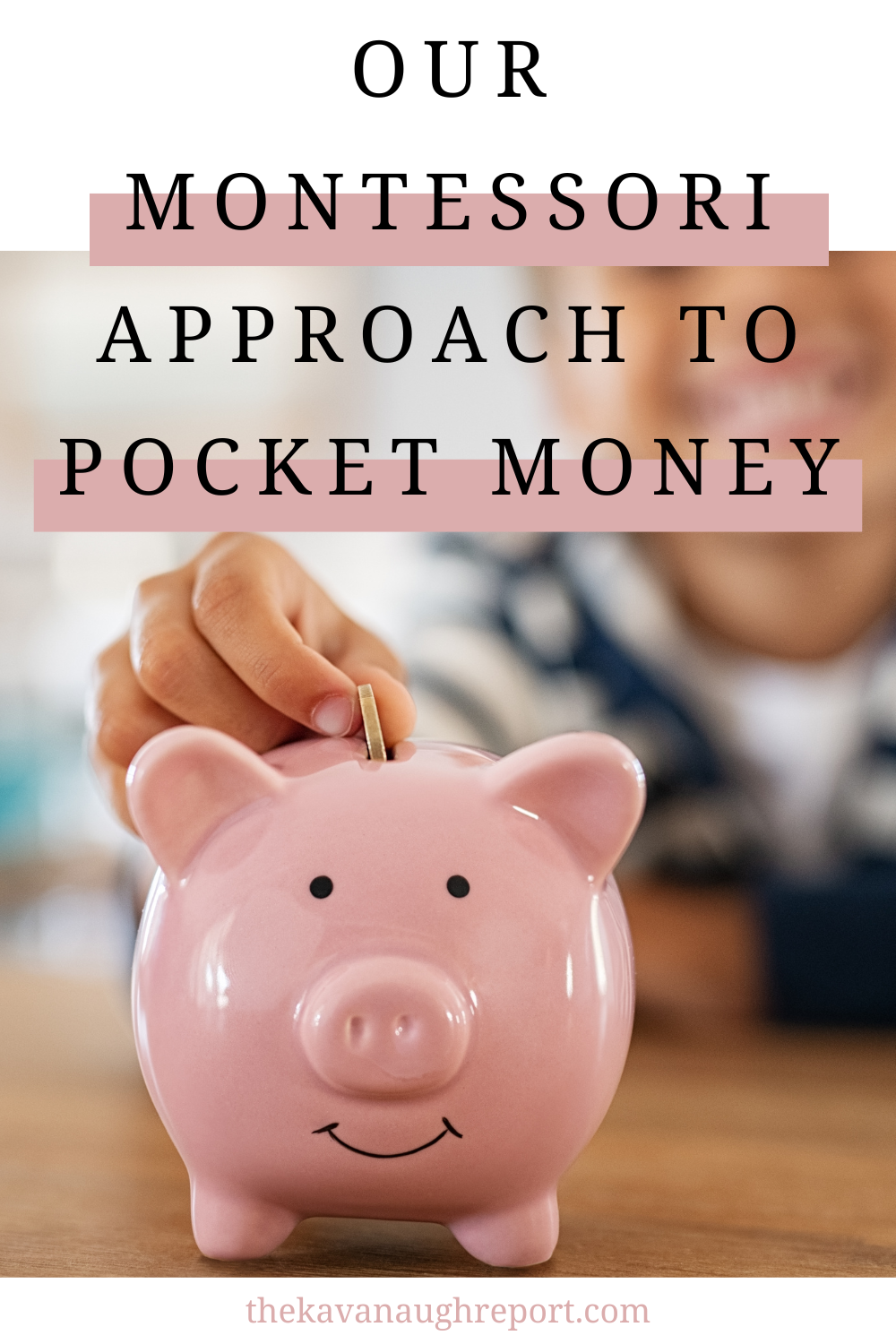There are so many unique characteristics for elementary aged kids, that is children in the Montessori second plane of development. Understanding the characteristics of second plane kids is important so that we can tailor our parenting tools to meet their needs. One characteristic of second plane children is a deep interest in money. Keeping this interest in mind is helpful as we approach pocket money, allowance, and learning about money with our elementary kids.
In my experience, the interest in money has gone something like this for my kids: what is money, sorting/counting money, spending money, saving money, and finally earning money. In each phase, they are gaining specific skills around currency and their relationship with money. Briefly, this has looked like:
- What is Money: playing with coins, carrying around money (at home), putting money in and out of things, learning names of coins/bills
- Sorting/Counting Money: huge interest in taking stock in the money they have, sorting type of coins, making dollars
- Spending Money: more concrete understanding that specific amounts of money is connected to things they want, a desire to go to the store and spend own money, bringing money into public
- Saving Money: wanting all the money to stay with them, huge interest in their piggy-bank and how much is in it
- Earning Money: creating business ideas and running with them to earn their own money
Supporting an Interest In Money in the Montessori Second Plane
Keeping all of this in mind, there's a few things we do as our children enter the second plane of development - ages 6 to 12 - to meet their need to explore money. First, we give them a place for money. A box, a bank, a jar, whatever they want it to be. They need a place to collect, store, easily access, and explore their money. While some families might choose to introduce a piggy-bank much younger, I've found that it's not really until the elementary years that my children have really cared. Money for the younger kids was simply a plaything, and one I didn't super want to give access to.
Next, we start opening up more opportunities to use money practically. We take them with us to purchase things, start talking with them about how much things cost, what our budget is for a particular expense, and start paying for smaller things with cash. We also start giving them the opportunity to buy things on their own - giving money, taking change, and talking with people.
Allowances with our Montessori Children
Finally, we provide opportunities for our kids to start to earn money of their own. We pay for a couple of chores around the house - things out of the ordinary. This includes weeding my garden, or doing some light babysitting (over age 11.) We also encourage them to be creative in looking for ways to earn money, watering neighbors plants, taking care of pets, or lemonade stands. We want them to follow their interests and talents to reach their goals within the safety of their childhood. These experiences are low stakes, but high impact for learning important skills.
However, we do not offer automatic allowance at this time. Instead, we talk with our children if they have something they want to buy. We talk about ways to save money on it (can we find it used, or on sale) and we talk about ways they can reach the amount they want. Sometimes, we will also contribute a specific amount toward a goal and the rest they need to figure out.
If they are doing specific activities, like going to an event with a friend, we are happy to give them a little pocket money to take along. We talk about what their budget is for that specific event, and talk about what they might want or need while out. This way they get used to these opportunities to plan, spend, and budget without the expectation that they are entitled to money each week without a goal in mind.

As our children move into adolescence and opportunities to spend money increase, we may start to change our approach a bit. I foresee more of a monthly activities/spending budget per child than a specific amount they are just given. I always want our goal to be less about giving pocket money and more about learning how to manage the money they have.
Second plane children have so many incredible characteristics and abilities. Their intense interest in money can be used as a jumping off point for so much learning. Every family will approach money learning differently, but as a Montessori parent to second plane children, money needs to be on your list of things you're approaching with your children.
How do you approach money in the second plane of development?





